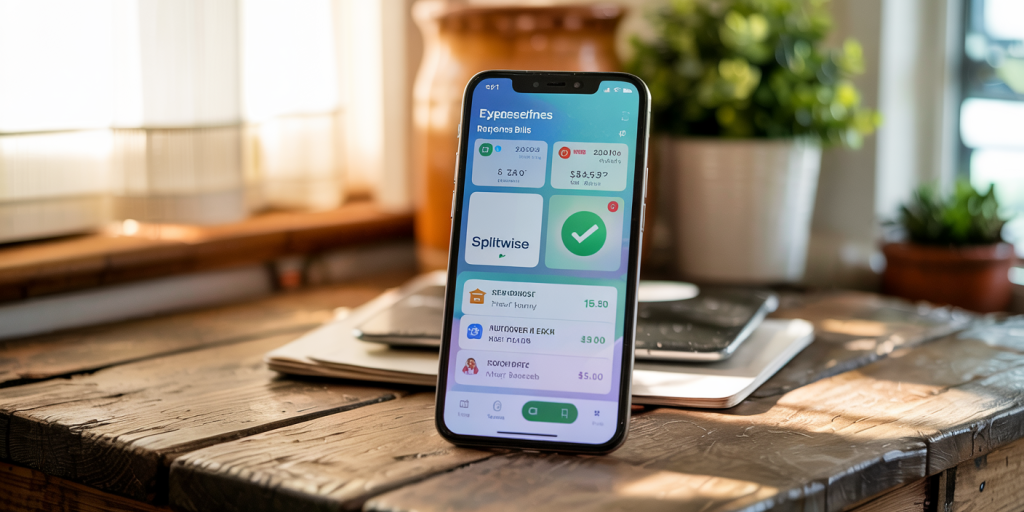The Best Way to Split Expenses in Shared Households
Sharing a household with roommates, friends, or family can be a rewarding yet complex experience. One of the most challenging aspects is figuring out how to fairly split expenses. Whether it’s rent, utilities, groceries, or other shared costs, striking a balance that suits everyone involved can prevent potential conflicts and enhance the overall living experience.

In recent years, the number of individuals living in shared housing has surged due to rising housing costs and urban migration trends. According to a 2022 report by the Pew Research Center, nearly 50% of adults aged 18-34 in the United States live with roommates or family members, largely driven by economic factors. With such a large demographic relying on shared housing, understanding the most efficient and equitable methods to split expenses has become increasingly relevant.
This article explores the best strategies for dividing costs in shared households, supported by practical examples, comparative analysis, and insights into future developments in this area.
Understanding Different Expense Types in Shared Households
Before diving into specific methods, it’s essential to categorize the expenses typically encountered in shared living arrangements. These can be broadly divided into fixed and variable costs.
Fixed expenses usually include rent, mortgage payments, and any recurring monthly fees like internet or security systems. These costs tend to remain consistent month-to-month and often form the bulk of a shared household’s budget. Variable expenses, on the other hand, consist of utilities such as electricity, water, and gas, as well as groceries, cleaning supplies, and household items. These fluctuate monthly depending on usage and consumption patterns.
A key challenge in dividing expenses stems from the nature of variable costs, where individual consumption can vary significantly among housemates. For example, one roommate might use more electricity due to working from home, while another consumes more water or heating.
To illustrate, consider a shared apartment where three roommates pay $1,500 monthly rent, plus approximately $300 in utilities each month. If all roommates occupy equal space and have similar lifestyles, splitting evenly might suffice. However, when one roommate has a larger bedroom or stays home while others work, a more nuanced approach may be necessary.
Equal Split Method: Simple but Sometimes Inequitable
One of the most common methods used in shared households is the simple equal split. Here, all tenants divide all household expenses by the number of occupants, making calculations straightforward. For instance, three roommates sharing $1,800 total monthly expenses would each pay $600 per month.
The simplicity of this method is its biggest advantage. No complicated calculations or tracking of individual consumption are needed, making bill payments quick and convenient. This method is especially effective when all tenants have similar living patterns, room sizes, and financial means.
However, the equal split method is not always the most equitable. In cases where roommates have disparate incomes, room sizes, or usage habits, fair cost distribution can be distorted, leading to resentment or financial strain. For example, if one roommate occupies a room twice the size of the smallest, paying the same rent portion might seem unfair.
Furthermore, if one roommate consistently uses more utilities (e.g., leaving lights on, extended heating use), splitting utility bills evenly might create tension. According to a 2021 survey from Rent.com, 42% of renters living with roommates reported disagreements about bill payments, primarily over perceived inequalities.
Proportional Split Based on Room Size and Income
In response to the limitations of the equal split, many households adopt proportional splitting methods that account for variables such as room size or individual income. This method aims to align cost distribution more closely with consumption and financial ability.
For room size, tenants can calculate rent shares proportional to the square footage of their private spaces. For example, if a shared apartment has a total living area of 900 square feet and one roommate’s bedroom is 300 square feet, that roommate would pay one-third of the rent. The common spaces (living room, kitchen) can be evenly divided among the roommates.
Income-based splits allocate expenses in proportion to each occupant’s earnings. For instance, if person A earns $4,000 per month and person B earns $2,000, person A might pay two-thirds of the rent and utilities, and person B one-third. This ensures affordability and fairness, particularly for mixed-income households.
The following table gives an example of proportional rent splits among three housemates:
| Roommate | Room Size (sq ft) | Income ($/month) | Rent Share (Based on Size) | Rent Share (Based on Income) |
|---|---|---|---|---|
| A | 300 | 4000 | $600 (33%) | $818 (45%) |
| B | 200 | 3000 | $400 (22%) | $613 (34%) |
| C | 400 | 1500 | $500 (45%) | $388 (21%) |
Advantages of this approach include improved fairness and reduced conflicts about unequal contributions. However, it requires transparency among roommates regarding income, which might interfere with privacy.
Tracking Variable Expenses with Apps and Tools
When sharing a household, dividing variable expenses like utilities and groceries can be complicated if consumption varies widely. Modern technology provides useful tools to handle these complexities smoothly.
Apps such as Splitwise, Venmo, and Settle Up allow roommates to record shared expenses in real-time, track who has paid what, and calculate individual balances. By inputting bills and shared purchases, these tools automatically suggest who owes whom, simplifying reimbursements.

An example case: four roommates use Splitwise to manage their monthly expenses. Roommate A pays the internet bill ($60), Roommate B buys groceries ($200), Roommate C pays the electricity bill ($100), and Roommate D covers a shared streaming service ($50). Each expense is logged, and the app calculates each roommate’s share for easy settlement.
This method minimizes misunderstandings and saves time spent on manual calculations. It’s especially effective in larger households or when roommates have varying schedules and responsibilities.
However, using apps requires consistent usage and honesty. If coworkers neglect to log expenses or pay their share on time, disagreements may arise. According to a 2023 survey by Apartment List, 58% of shared households that used expense tracking apps experienced fewer conflicts compared to those who did not.
Blind Contribution and Communal Fund Approaches
Another popular method, particularly in student and long-term roommate arrangements, is the communal fund or “blind contribution” system. Every member contributes a fixed amount of money into a shared pool at the beginning of each month, which is then used to pay all household expenses.
This approach differs from detailed accounting and is based on mutual trust and cooperation. It works well when roommates have a history of good communication and similar consumption patterns.
For example: five roommates each contribute $500 monthly, totaling $2,500. The funds cover rent, utilities, maintenance, and shared groceries. A designated treasurer manages the account and ensures bills are paid. Any leftover funds at month’s end are either saved for future use or partially refunded.
While this system reduces calculation burdens, it can lead to potential imbalances if some roommates consistently use more resources. Effective communication and regular review meetings help maintain fairness.
Future Perspectives: Technology and Fairness in Shared Household Expenses
As shared living arrangements become more common, the need for innovative, fair, and efficient expense splitting methods grows. Technology will continue to play a pivotal role.
Emerging smart home technologies—such as individual utility meters for rooms and AI-assisted budgeting applications—promise to increase transparency and precision in cost allocation. IoT devices can monitor actual consumption of electricity, water, or heating by each occupant, allowing perfectly tailored expense division based on real usage rather than estimations.

Moreover, blockchain-based smart contracts are being explored to automate rent and bill payments in decentralized, transparent ways. These digital contracts can release payments automatically once predefined conditions are met, reducing disputes and enhancing trust.
Social trends also point to more flexible shared housing models, such as co-living spaces, where companies manage the financial intricacies and use tech solutions to distribute costs seamlessly among residents. According to Statista, the co-living market is expected to grow at a CAGR of 17.4% through 2027, emphasizing the demand for streamlined expense management.
Finally, ongoing research into behavioral economics in shared expenses may illuminate how psychological factors influence cooperation and fairness perceptions. This insight can guide the design of systems that promote harmony among housemates, ensuring that expense splitting not only manages finances but fosters positive social dynamics.
In conclusion, the best way to split expenses in shared households depends on the makeup and preferences of the tenants involved. Equal splits, proportional contributions, app-enabled tracking, and communal funds each offer unique advantages and disadvantages. As technology advances and shared living trends evolve, more tailored and transparent solutions promise to make financial collaboration easier, fairer, and more sustainable for everyone involved.